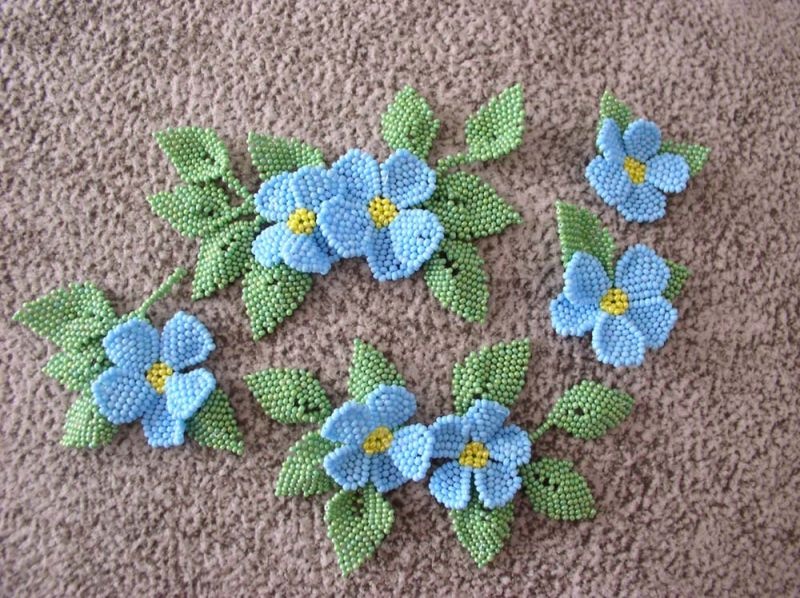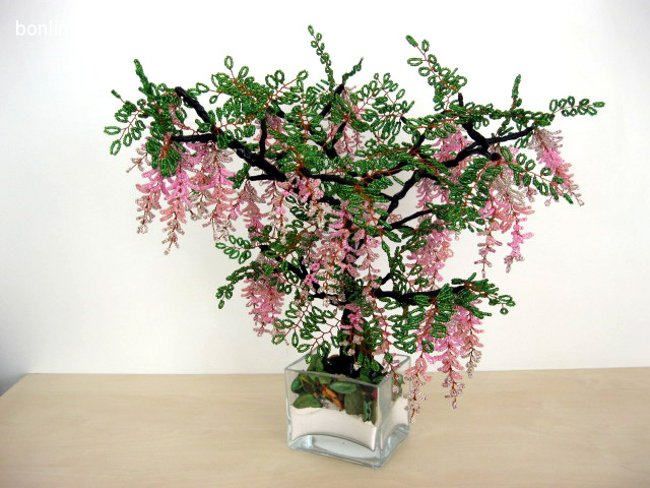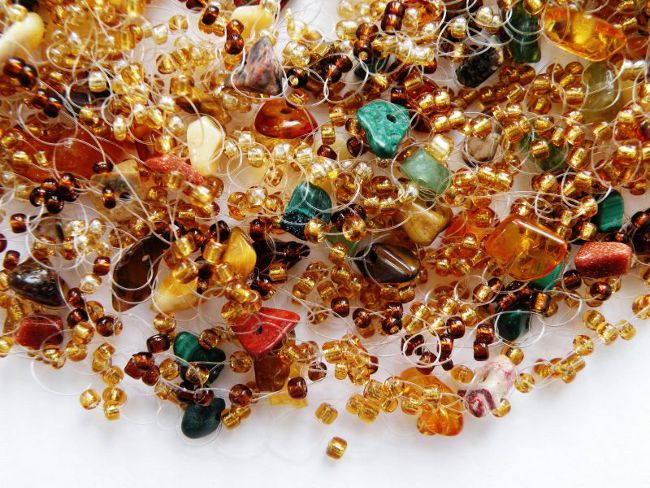Beadwork: kinds of beads
 If you have chosen as a hobby weaving with beads, it is not superfluous to find out which types of beads for this purpose are used. After choosing the type of beads that best suits the intended product, it will be easier for you to realize your idea!
If you have chosen as a hobby weaving with beads, it is not superfluous to find out which types of beads for this purpose are used. After choosing the type of beads that best suits the intended product, it will be easier for you to realize your idea!Addition simple beads - in fact, miniature beads, - there are kinds of beads, like cuttings, bugles and faceted beads (charlotte). A simple bead has a round and sometimes square shape, its edges are melted. Bugle is a tube (cylinder), elongatedin length. If in a simple bead the length of the bead and its diameter are approximately equal, then the bugle has a length much larger than the diameter. Bugle can be smooth, with edges and twisted. The average length of the bugle is about 7 mm. The bugle has an oblique and straight cut; for weaving with beads it is more convenient to use an oblique glass bead. Deck similar to a glass bead with a cylindrical shape, but its dimensions are closer to a simple beads - 2-3 mm. The edges of the felling and bugles are not fused, but are chopped off. Charlotte (faceted beads) sparkles like a precious stone due to its high refractive power.
By country of origin distinguish three main types of beads: Taiwanese, Czech and Japanese. Taiwanese beads Uniform in shape and size, and bugles andCutting has sharp edges. Therefore, when using Taiwan beads, weaving with beads can be difficult: it cuts the thread and breaks easily because of its fragility. Taiwanese beads quickly fade and can not boast of a rich color scheme. However, it is cheap, which makes it an ideal material for beginners. Close to the Taiwanese in quality, price and performance Chinese and Indian beads.
Most needlewomen use beads for weaving Czech beads. This type of bead has a wide range of sizes andflowers (about 1500 different types of beads, bugles and felling). Czech beads are better than Taiwanese ones. However, weaving with beads can be difficult due to the choice of shade, because the shade of the same kind of beads can be different depending on the lot. The Czech beads are uniform in shape and size, however, there are defective beads with a narrowed hole. The Czech felling and bugles also have sharp edges. Czech beads are more expensive than Taiwanese, but its price is quite affordable.
Less common type of beads - japanese beads. It is very high quality, but also very expensive. Japanese seed beads are smooth, smooth, uniform, without noticeable defects. When weaving with beads, it does not have to be calibrated. It has a rich color palette, and shades of Japanese beads do not depend on the party. Assortment of Japanese beads is very wide. The edges of the Japanese felling and bugle are melted and do not cut the thread. However, Japanese beads are not very popular in our region because of their high price.
Bead sizes range from 3.0 (5.5 mm) to 15.0 (1.5 mm). Knowing the size of the beads, you can calculate the number of beads per unit weight. 1 g of beads of size 11.0 (diameter 2.2 mm) contains 93 beads. And for 1 g of small Japanese beads of size 15.0 there are 300 beads.
There are transparent and opaque beads. Across transparent beads The thread on which it is strung is clearly visible. Such beads are made of colored glass. It does not lose color under the influence of sunlight or household chemicals. Beads can also be painted - inside or outside. Sealed beads from inside is made of transparent glass, it can fade in the sun or from the contact of household chemicals. However, it does not wipe off clothes or skin. Colour beads, painted outside, very unstable, so it is better to use it not for weaving with beads, but for embroidery.
Surface rainbow beads overflows with all the colors of the rainbow. There is a transparent, opaque and dyed rainbow beads. One of the best types of beads is considered glossy; it is also transparent and opaque. Metallized beads has a metallic surface, and galvanized covered with silver. There are also beads covered with other precious metals. Still there are matte and silk beads. Frosted Beads It is transparent, opaque, iridescent and galvanized. There are also combined kinds of beads, combining the qualities of several of its varieties.
The presented classification of beads according to different criteria is somewhat simplified, but a beginner in beadwork will be enough. Professionals are mainly used Czech classification of beads, more clearly separating the types of beads.
What kind of beads to choose for beading? First of all it depends on the technique of weaving with beads, and also on what kind of product you are going to weave - a bracelet, a necklace, an animal figure, a flower or even a bonsai of beads. And, of course, the color, shape and size of the beads, as well as its price, are important.














